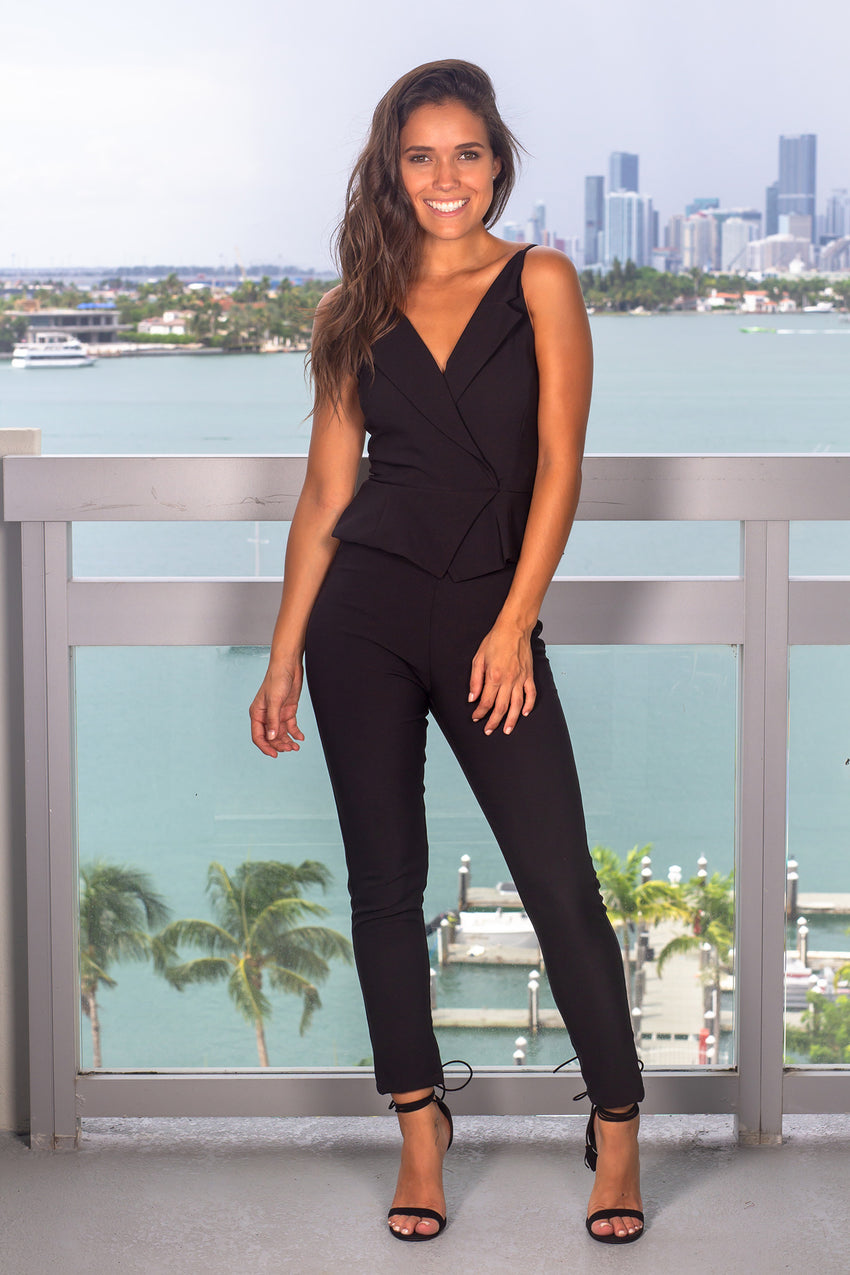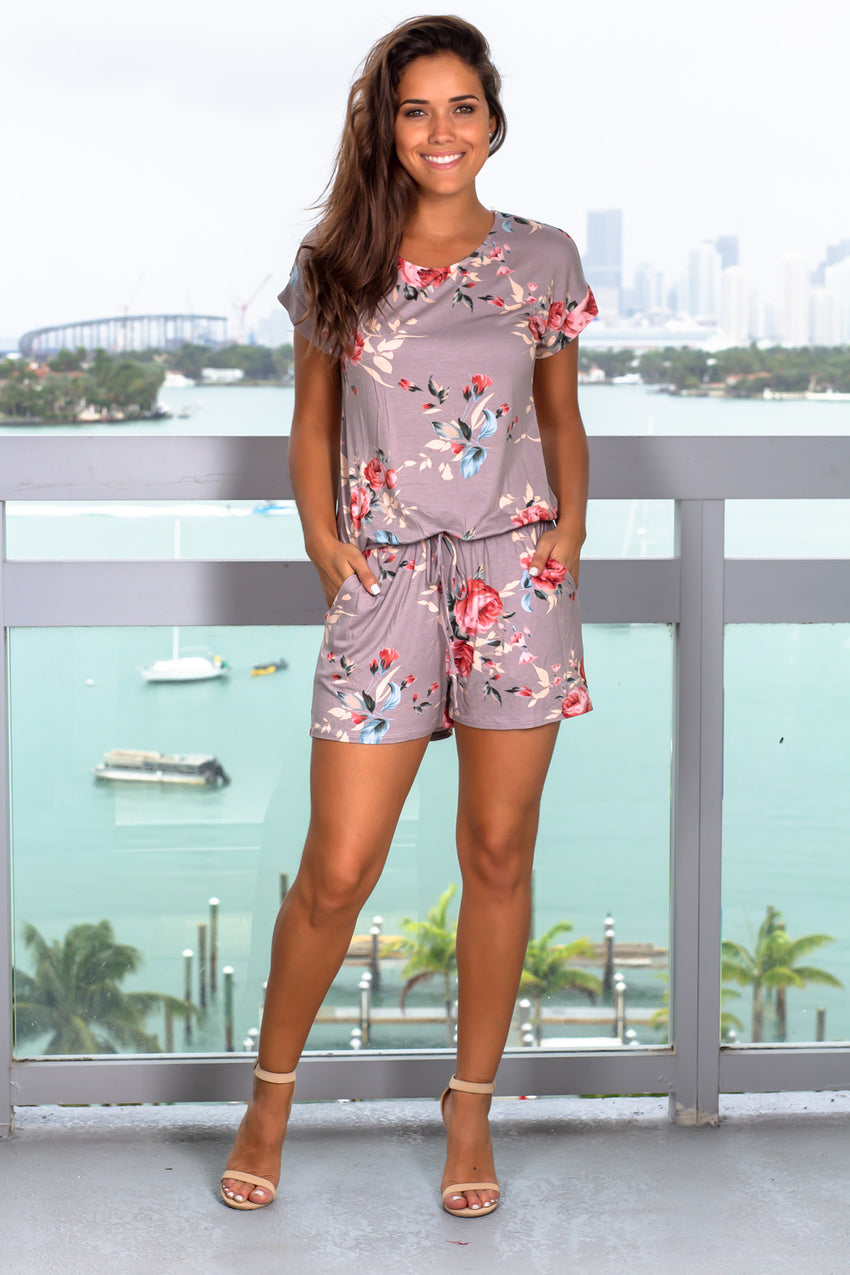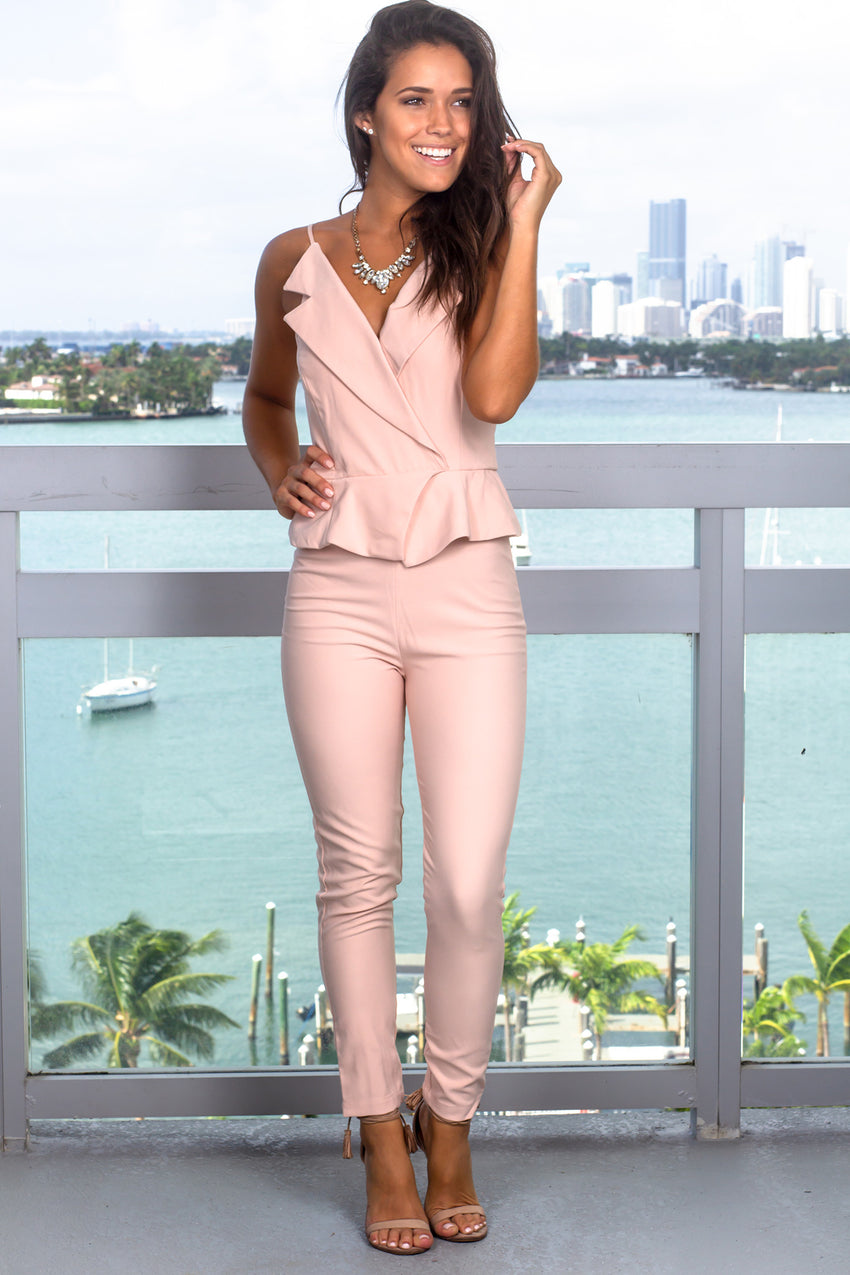Trendy Jumpsuits vs Fashion Rompers
What’s the Difference?
Even the savviest fashionistas sometimes refer to jumpsuits and rompers as if they’re the same thing. But while these garments may have some distinct similarities, they make up two unique staples of fashion. If you want to find the perfect piece to add to your wardrobe right now, it helps to understand the subtle but important nuances that set trendy jumpsuits apart from rompers. Let’s break them down.
Jumpsuits

A trendy jumpsuit is always a one-piece garment. Quite often, it has the deceptive appearance of a stylish top and pants, but the two sections are connected. Our Black Surplice Jumpsuit is the perfect example. The surplice V-neck top and loose trousers blend effortlessly together, and the top provides just enough overlap to give the illusion of a perfectly matched two-piece ensemble. However, it’s actually a one-piece polyester garment that extends from the shoulders down to the ankles.
Though people often associate jumpsuits with sleeves, a jumpsuit may actually have long sleeves, short sleeves, or no sleeves at all. When compared to a fashion romper, it’s not so much distinguished by the coverage of the arms as it is the coverage of the legs.
Trendy jumpsuits have been in vogue for decades because they provide instant, effortless style with minimal maintenance. You never have to worry about coordinating an outfit from multiple parts, but you can still accessorize with ease. Jumpsuits are chic, comfortable, and versatile. They also come in a range of styles. For example, while a traditional jumpsuit provides coverage for the upper and lower body, you can also find bold models—like this Black Front Twist Jumpsuit—that allow you to show off extra skin and hold your own at more formal affairs.
For a bit of a history lesson, the modern jumpsuit evolved from the TuTa, a garment developed by futurist designer Thayaht in 1919. An early 20th century marvel of Italian fashion, the TuTa became one of Thayaht’s most iconic pieces, noted for its one-piece construction and full coverage for the arms, legs, and body. In the 1930s, designer Elsa Schiaparelli created the first trendy jumpsuit designed for women’s fashion, and the style has undergone countless iterations since then.
Rompers

Fashion rompers are similar to jumpsuits in a lot of ways, but there’s at least one major difference that’s immediately evident, and that’s the amount of leg coverage. While jumpsuits commonly extend to the ankles, rompers end at the thigh, making them suitable for more casual occasions. This Mocha Floral Romper is one example that exemplifies the style. Featuring a chic floral top that extends down to the mid-thigh, it has the look of a casual blouse and shorts combination, but the garment is connected at the waist.
Though a typical romper resembles a pair of shorts below the waist, you can also find fashion rompers that resemble dresses with flowing skirts or maxi capes that extend below thigh-level. One example is this White Printed Maxi Romper.
Like trendy jumpsuits, rompers are commonly one-piece garments, although two-piece rompers exist as well. These sets usually consist of matching shorts and a top designed to be worn as a complete ensemble.
Originally developed as playwear for small children in the early 1900s, rompers entered the women’s fashion scene in the 1950s as they populated for beachwear. By the 1970s, terrycloth rompers were a full-fledged fashion phenomenon, though they faded from the public consciousness shortly thereafter. It wasn’t until around 2006 that the romper renaissance took over the fashion world, and these comfortable and versatile garments have remained popular ever since.
Similarities and Differences
When you look at the examples side-by-side, it’s easy to see why these two trendy styles are often confused for one another. They both commonly combine the top and bottom into a single matching or complementary piece. They both offer a layered appearance that comes together at the waist. They both stress comfort as a top priority. Some models even blur the line by offering more leg coverage than a typical romper, but less than a typical jumpsuit. This Black Romper with Tie Detail is one example.
If you’re not sure whether you’re looking at a romper or a jumpsuit, the best thing you can do is just look at the legs. If the piece includes trousers that fall to the floor, it’s probably a jumpsuit. If the leg coverage only extends to the thigh, it’s probably a romper. Everything beyond that is just semantics.
Should You Wear a Trendy Jumpsuit or a Fashion Romper?

It’s important to understand the difference between rompers and jumpsuits because these items are typically suited for different occasions. While there are certainly exceptions to every rule, you’ll most commonly want to wear rompers to casual, sporty, or relaxed events, and reserve your jumpsuits for more formal affairs when you really want to make a splash. That’s not to say that there aren’t formal rompers and casual jumpsuits; it’s just a general rule of thumb, and you’ll need to weigh it on a case-by-case basis.
For example, if you want to be the hit of the gala, a White Strapless Jumpsuit With Slits may be in order.
If you’re looking forward to a casual pool party with the girls, a Black Velvet Romper may be perfect.
For a full day of activities that includes both relaxation and formal dining, opt for a versatile piece like this Charcoal Striped Romper.
For that next boardroom presentation, a Blush Surplice Jumpsuit offers effortless style and class.
For an unforgettable date night, you can’t go wrong with this Berry Lace Top Jumpsuit.
Do you have a favorite trendy jumpsuit or romper? Perhaps a preferred style? Tell us which type of garment inspires you the most!


